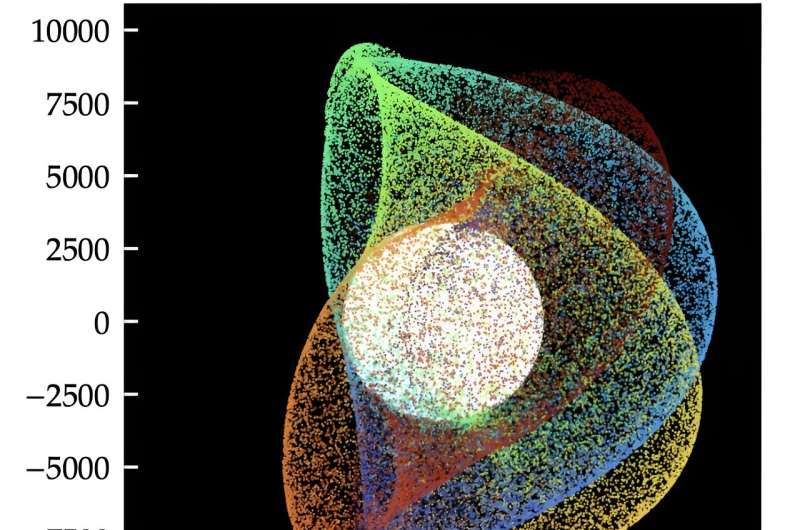The James Webb Space Telescope is a perfect example of why such a system is necessary. On its way to the L2 Lagrange point, it has already suffered at least 20 micrometeoroid impacts, at least one of which hit the space telescope's primary mirror, leaving a dent that still affects the quality of its images to this day.
Due to such high-profile occurrences, spacecraft designers are already aware of the risks. However, many don't know their trajectories when designing their systems. Without a planned trajectory, the MEM is all but useless.
Enter Althea Moorhead from NASA's Meteoroid Environment Office at Marshall Space Flight Center and her colleagues Katie Milbrandt from Auburn and Aaron Kingery from ERC, Inc., also based at Marshall.
They improved the MEM's functionality by introducing a library of known spacecraft trajectories and the MEM outputs for each. The work is published in the journal Advances in Space Research.
Instead of knowing their end trajectory, spacecraft designers would be able to simply look at the library and determine whether there are any significant risks from meteoroids on any number of potential trajectories.
In particular, the library includes data on orbital paths around every significant planet, some transfer orbits, and at least two "halo" orbits, where the spacecraft would take advantage of the relative stability of a planet's Lagrange points.
The output of the library allows for visualizations of the risks the spacecraft would encounter, which is much easier to understand than complex equations and probabilities for designers who don't necessarily specialize in micrometeoroid hazards.
That was the original impetus for developing the library—to provide generalists who don't necessarily have time to grok the details of micrometeoroid locations and risks but still need to consider them as part of their mission design.
The paper authors stress that the library shouldn't be used for the formal risk assessment that NASA requires of all missions destined for launch. That requirement can still be met by the MEM itself, along with a well-established orbit. But, if that orbit happens to be informed by the library described in the paper, all the better for it.
More information: Althea V. Moorhead et al, A library of meteoroid environments encountered by spacecraft in the inner solar system, Advances in Space Research (2023). DOI: 10.1016/j.asr.2023.08.016
Provided by Universe Today



